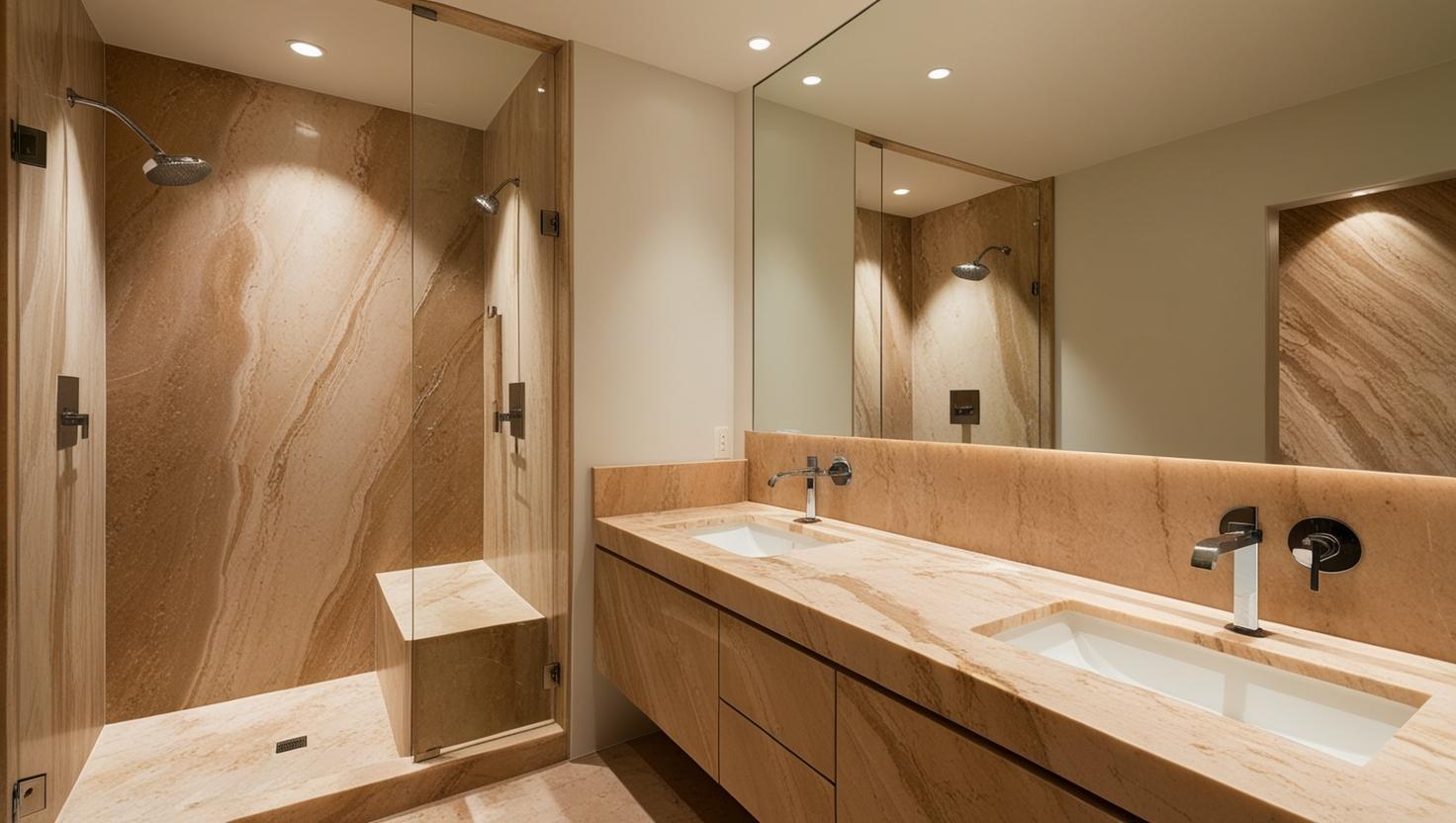For centuries, architects and designers have turned to natural stone to create spaces that are both beautiful and built to last. Among these materials, travertine holds a special place. Its warm, earthy tones and unique texture tell a story of natural artistry, making it a sought-after choice for everything from grand historical monuments to contemporary homes. Travertine stone offers a connection to the past while providing a foundation for modern design, embodying a blend of enduring strength and classic style.
This article explores the distinct qualities of travertine. We will examine its formation, its rich history, and the characteristics that make it a versatile material for a wide array of applications. By understanding what sets travertine apart, you can appreciate why it continues to be a symbol of sophistication and durability in the world of design.
The Origins of Travertine
Travertine is a form of terrestrial limestone, created by the precipitation of carbonate minerals from geothermally heated hot springs. This natural process results in a stone with a characteristically porous and fibrous appearance. The pits and troughs seen on its surface are the result of gas bubbles being trapped during its formation, giving each slab a unique pattern and texture.
The colors of travertine are a direct reflection of its geological origins. They typically range from soft ivories and creams to rich walnuts and golden tans. The presence of different minerals during its formation can introduce subtle variations and veining, adding to the stone’s organic beauty. This natural artistry ensures that no two travertine installations are exactly alike, providing a bespoke element to any design project.
A Stone Etched in History
Travertine’s legacy is deeply intertwined with human history, most notably with the architectural marvels of ancient Rome. The Colosseum, one of the most iconic structures in the world, was built extensively with travertine, a testament to the stone’s incredible durability. For thousands of years, it has withstood the elements, bearing witness to the rise and fall of empires.
This historical significance lends travertine a sense of gravitas and timelessness that few other materials can match. Its use in structures that have endured for millennia speaks volumes about its inherent strength. When you incorporate travertine into a space, you are not just choosing a building material; you are connecting to a long and distinguished heritage of design and construction.
Versatility in Modern Design
Today, travertine remains a popular choice for a variety of interior and exterior applications. Its ability to blend seamlessly with both traditional and contemporary styles makes it exceptionally versatile.
Inside the home, travertine is often used for flooring, countertops, and backsplashes. Its soft, warm tones create an inviting atmosphere, while its textured surface adds a layer of visual interest. In bathrooms, it can transform a simple space into a spa-like retreat.
Outdoors, travertine is an excellent material for pool decks, patios, and walkways. One of its remarkable properties is its ability to stay cool to the touch, even in direct sunlight, making it comfortable for bare feet. Its porous nature allows it to absorb water quickly, providing a naturally slip-resistant surface.
Cultivating Enduring Beauty
Travertine is a material that balances elegance with practicality. It offers a unique combination of historical depth, natural beauty, and functional strength. Its ability to adapt to different design aesthetics while maintaining its distinct character is what makes it so appealing. Choosing travertine means investing in a material that not only enhances the beauty of a space but also promises to endure for generations to come, creating a legacy of its own.




